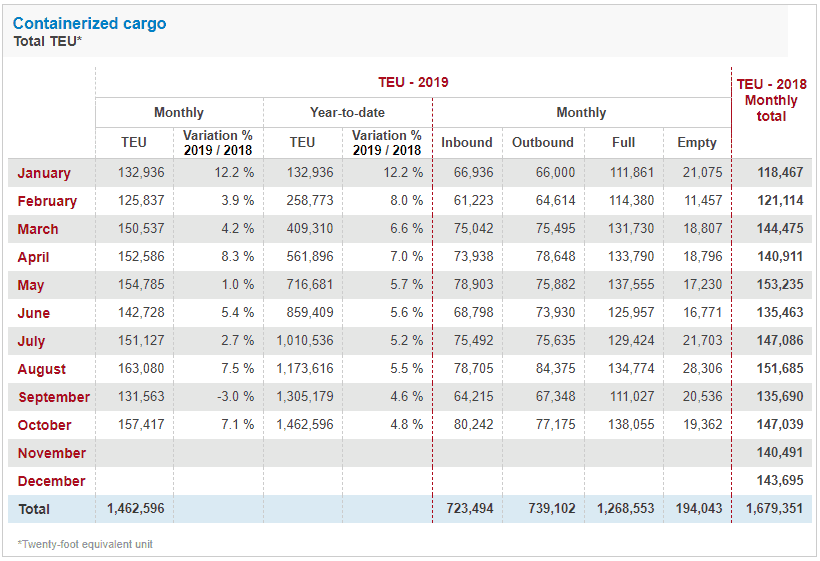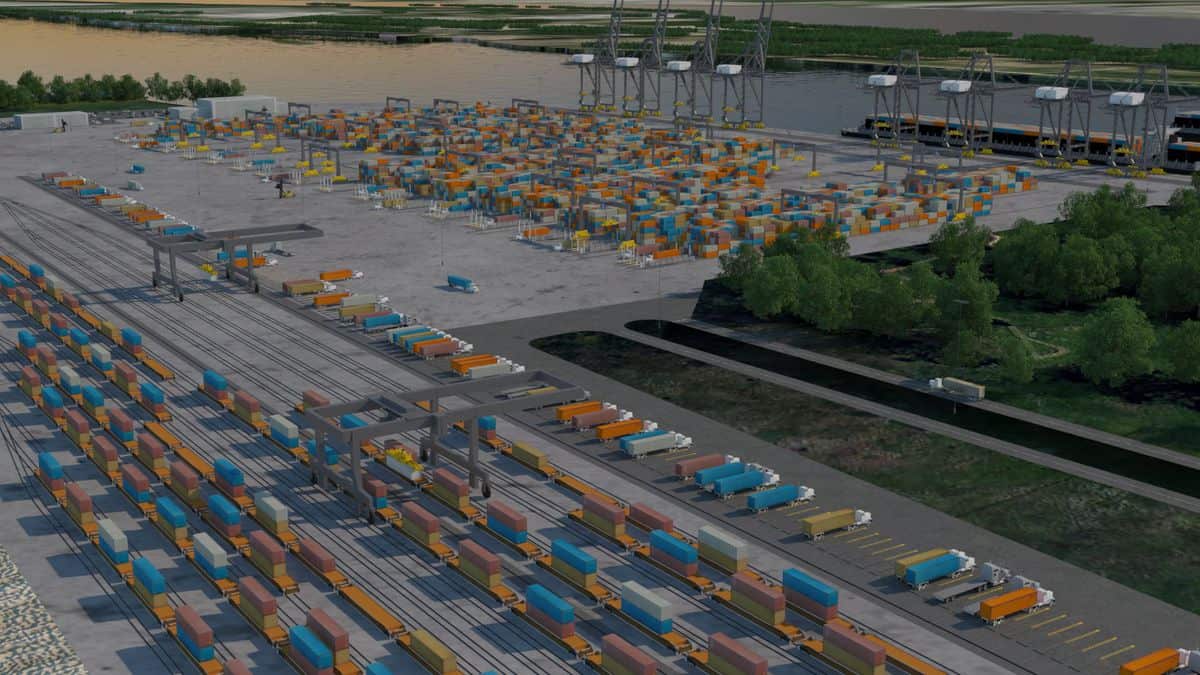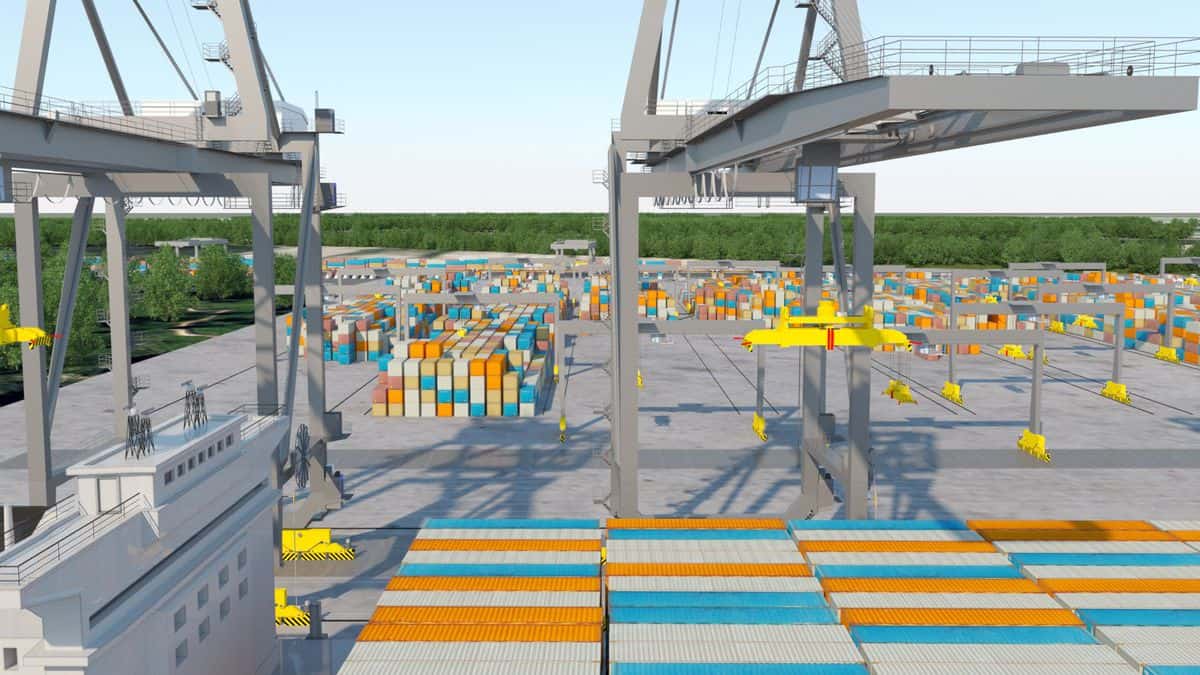The Canada Infrastructure Bank (CIB) said it will provide up to $300 million to finance a new container terminal the Montreal Port Authority plans to open downriver in Contrecoeur.
CIB is a crown corporation, or government-owned lender, that says it “uses financial instruments including loans, equity, and where appropriate, loan guarantees to deliver federal support to projects to make them commercially viable.”
The port said CIB’s backing will enable it “to continue working, in collaboration with the private sector, to complete the financial structuring of the project.” The total cost of construction is expected to run between $750 million and $950 million.
According to the Montreal Port Authority website, “Construction of the terminal is scheduled to start in 2020, conditional on obtaining the necessary permits and other success factors. Commissioning of the terminal is planned for 2023-2024.”
The new Contrecoeur terminal will help the port meet growing cargo volumes.
According to an environmental impact assessment prepared in 2017 for the project by SNC-Lavalin, the port’s existing terminals near the heart of the city had capacity of about 2 million TEUs, and other projects at the existing terminals will grow the capacity to 2.5 million by 2022.
But by 2030, cargo volumes at the port were expected to approach that level, growing to 2.47 million TEUs from 1.68 million TEUs in 2018.

So the port expects the additional 1.15 TEUs of capacity from Contrecoeur will help it meet growing demand. And that’s just phase one of the project. The Contrecoeur terminal could eventually be expanded to 3.5 million TEUs in future decades.
The Contrecoeur terminal will be located 25 miles downriver from the Montreal Port Authority facilities on the south bank of the St. Lawrence River.
In January, the Montreal Port Authority decided to work with its terminal operators, Montreal Gateway Terminals Partnership and Termont Terminal, to accelerate the execution of its business strategy for the container terminal project at Contrecoeur.
The new container terminal is to have two berths and eight cranes and the terminal is expected to amount to two or three ships per week. The terminal is also expected to be visited by 1,200 trucks and one train per day. Canadian National Railway Co. (CN Rail) track is near the terminal.

“The Contrecoeur expansion will strengthen and diversify our trade with other countries. Given the port’s central role in the Canadian economy, this wealth creation will have an impact on the entire country,” said Pierre Lavallée, president and chief executive officer of the bank.
He added that “without the Contrecoeur terminal, ships would have to travel to U.S. ports, which would increase GHG and air pollutant emissions.”
Sylvie Vachon, president and CEO of the Montreal Port Authority, said the new terminal will make the port more competitive and “strengthen Montreal’s role as a hub for maritime trade in eastern Canada. This will support national economic prosperity through job creation and supply chain development.”

The SNC-Lavalin report noted that because of its location on the St. Lawrence River, Montreal will likely never see mega-ships of 12,000 TEUs to 21,000 TEUs, but that it has adapted to larger ships with container ships serving the port growing in size from 750 TEUs to 6,000 TEUs.
Mélanie Nadeau, communications director for the port, says the average size of container ships that come to Montreal today have a capacity of 4,200 TEUs. The largest have capacity to carry 6,500 TEUs, and she said this will also be true at Contrecoeur.
CIB’s support will make the port “more competitive, which will strengthen Montreal’s role as a hub for maritime trade in eastern Canada. This will support national economic prosperity through job creation and supply chain development,” said Sylvie Vachon, president and CEO of the Montreal Port Authority.
An existing dry bulk terminal at Contrecoeur, operating since the mid-1950s, will remain in operation.










